- Home
- Tom Clancy
SSN Page 4
SSN Read online
Page 4
More was on order, of course, and it wouldn’t be long before Pearl was fully stockpiled, but by then Cheyenne would be halfway to the South China Sea.
Cheyenne’s loadout included sixteen Mk 48 ADCAPs, six Tomahawk land-attack cruise missiles, and four Harpoon antiship missiles for medium-range attacks on surface ships. The loading was a long process. The Mk 48s had to be slowly and carefully lowered into the loading hatch one at a time, and the Tomahawks in their loading canisters were loaded directly into Cheyenne’s vertical launch tubes.
If Mack had had his way, though, the loading process would have taken even longer. He’d take Cheyenne out as soon as she was ready, of course, but he would have been happier if she’d had a full complement of weapons.
The transit to the rendezvous with Independence would take Cheyenne in a southwesterly direction through the Pacific Ocean and past the Marshall and Solomon Islands, both sites of grisly combat operations over fifty years ago. She would then pass by the Caroline Islands and cut through the Celebes Sea before entering the Sulu Sea and, finally, the South China Sea.
Naval intelligence had confirmed that Cheyenne had sunk the second of the Chinese Han class of nuclear attack submarines, number 402, and that she had been witness to the destruction of what turned out to be Han number 404 south of Honolulu. These two confirmed kills, along with the Han destroyed earlier by the submarine escorting Nimitz, meant that the Chinese navy had only two remaining nuclear powered submarines. Or at least, Mack reminded himself, only two that the United States knew about.
Addressing that lack of intelligence was a part of Cheyenne’s mission. Once in China’s home waters, Cheyenne’s orders were to gather intelligence on Chinese naval operations while making her way south in the direction of Indonesia. There, 100 miles northwest of Natuna Island, their old friend USS Independence would be waiting for them.
Thinking about their mission and the tools they’d have available to complete it, Mack adjourned the meeting. The loadout would be complete in less than two hours, and he wanted his officers and sailors ready for imminent combat operations.
* * *
Somewhere in the central Pacific, a Chinese Luda class destroyer sat quietly, dead in the water. One hundred meters below it lay its partner in crime, a Romeo class diesel attack submarine. Their mission was simple: sink as many American vessels as possible. They had heard the news of China’s losses in the Pacific Ocean, so they were pleased to detect a merchant ship, The Southwest Passage, an American merchant vessel two days out from Japan, en route to one of the Hawaiian Islands.
The merchantman was not a big ship, but she was flying the American flag, and that made her a target. As soon as The Southwest Passage came within eighty miles, the destroyer captain launched one of his two Harbin Z-9A helicopters in order to confirm the identity and nationality of the ship.
The merchantman did not, at first, realize the danger she was in, and her captain kept her on course. When the Chinese helicopter finally buzzed the bridge, however, he radioed their observations in to the U.S. Navy and received orders to alter their course to avoid, as the Navy radioman described it, “a possibly life-threatening situation.”
Unfortunately for the merchant ship and her crew, it was already too late. Without warning, three Chinese HY-2 missiles, variants of the Silkworm surface-to-surface missile family, came streaking across the sky, directly into the hull of The Southwest Passage. All three impacts came within seconds of one another, two in the aft section of her hull, the third closer to the bow.
The Southwest Passage went down like a rock, not even pausing to break up. All hands were lost, most of them dying in the explosions.
Aboard the Chinese destroyer, the captain was well pleased with the results. They had struck back successfully at the Americans. Even better, he had used only his destroyer in the attack. With luck he would be able to keep his submarine a secret, saving it as a surprise for a bigger fish, perhaps even a U.S. warship.
Having just passed Midway Island, Cheyenne was about to begin turning southward when she received word of the attack on The Southwest Passage. Since getting underway submerged from Pearl, Mack had maintained the floating wire communications antenna streamed to get any information that the Navy might wish to pass along to them. He had expected intelligence updates, and information on the latest developments, but he hadn’t been expecting news like that.
According to the message, the attack had occurred due south of Cheyenne’s current position. The coordinates were located approximately one day’s travel at full speed — or about a day and a half at their current rate of twenty knots. Mack didn’t hesitate. His orders allowed him some latitude, and he was prepared to take full advantage of that.
Reading the message a second time, he gave the order to turn Cheyenne and head full speed toward the destroyer’s reported position. In the absence of a formal declaration of war, the Chinese government would undoubtedly brand the destroyer a renegade. Which was fine with Mack. He intended to bring them to justice… American style.
* * *
Twenty-six hours later Cheyenne received her second surprise. They had picked up a target, but it wasn’t the destroyer. Instead, there was another signal masking the one they’d expected.
Sonar quickly identified it as a diesel submarine, Romeo class. The Chinese submarine must have been having a problem with her snorkeling system because she was recharging her batteries on the surface — and making a tremendous amount of diesel noise in the process. It was another two hours before they picked up the Luda destroyer running at about thirteen knots.
Mack ordered battle stations manned. “Quite a day for going hunting, don’t you think?” he said to the diving officer.
“Sure is, Captain. It’s not often you find an enemy submarine on the surface with its pants down like this one.”
For targets such as these, the Harpoon surface-to-surface missile — or, in this case, submarine-to-surface missile — was without a doubt the weapon of choice, especially since both the Chinese submarine and the destroyer were operating so noisily. Cheyenne was able to determine their positions precisely and easily, something that was highly uncommon at this distance.
“Conn, sonar. Master 11 is bearing 013. Master 12 is bearing 002.” Master 11 was the Romeo-class submarine; Master 12 was the destroyer. Neither of them had any idea what was about to be sent their way.
Over the next ten minutes, the BSY-1 computers were able to determine rough ranges of forty-three nautical miles to Master 11, and forty-two nautical miles to Master 12. Cheyenne didn’t need the actual range. As long as the targets were within reach of the Harpoons, it was the accurate bearings that counted.
Mack was pleased with the target acquisitions. “Torpedo room,” he called from the conn. “Remove the torpedoes and reload tubes two, three, and four with Harpoons. Leave an ADCAP in tube one.”
The response was immediate. “Remove the torpedoes and reload tubes two, three, and four with Harpoons, leave an ADCAP in tube one, aye, sir.”
Mack would have loved to shoot off all four of his Harpoon missiles, but that was cowboy tactics. The two known targets were making so much noise that he had to keep in mind the possibility that there was a third — and much more quiet — enemy in the area. He needed to keep one torpedo ready to shoot in case he ran into one of the remaining Han class attack submarines they knew about — or, worse, an enemy they didn’t know about and weren’t prepared for.
The Luda destroyer was the bigger target, and it was more mobile than the surfaced Romeo class submarine. Mack decided to target two Harpoons to the Luda and only one to the submarine. At his command, Cheyenne decreased speed and began to creep silently through the water.
“Tubes two, three, and four are loaded with Harpoons,” reported the combat system officer. Cheyenne was now ready to fire her missiles.
The UGM-84, the submarine-launched variant of the Harpoon, came “wrapped” inside a buoyant capsule that was shaped to fit inside a torped
o tube. Upon firing, the UGM-84 would rise to the surface and, after ejecting the nose to the capsule, would ignite its rocket booster. Then, after dropping its booster, the Harpoon’s turbojet engine would light off and the missile would accelerate on course toward its target. As the UGM-84 neared its target, the radar seeker head would switch on and the Harpoon would commence its final approach.
For this mission, Mack ordered each Harpoon programmed to make a “pop-up” maneuver before attacking its target. This would confuse any antimissile systems the enemy destroyer might have on board. Cheyenne was only going to have one easy launch window at these two Chinese vessels. Mack wanted to make sure that his shots counted.
“Firing point procedures,” Mack ordered, “tube two, Master 11; tubes three and four, Master 12.”
He gave the order to fire the Harpoons two minutes later. They were launched to the surface by the weapons control console and the sonar man heard the rocket boosters ignite. “Reload tubes two, three, and four with Mk 48s,” Mack commanded.
Flying at just under the speed of sound, the missiles found their marks in less than five minutes. This time it was the Chinese who never had a chance.
Three large explosions marked the success of Cheyenne’s attack. The Romeo was hit first. The Harpoon came from its cruising altitude, performed its pop-up maneuver, and slammed into the top of the Romeo’s afterdeck while the submarine was recharging on the surface. The Chinese navy had tried to save money by not repairing the damaged snorkel system. That decision cost them their submarine.
The missile’s 510-pound high-explosive warhead detonated on impact, tearing a large hole in the hull and sending the force of its explosion down into the belly of the submarine. The thin steel hull burst apart, splitting the submarine into two pieces. Both halves quickly filled with water and sank, opposite ends first, into the sea.
Twelve seconds later, it was the destroyer’s turn. The first missile hit its front end, directly under the 130mm gun. There was a horrific explosion and the entire fore section of the destroyer was bent in a downward direction, bringing a large amount of water into the ship. The second Harpoon hit the ship’s bridge, killing the captain and all in its command center.
The 3,400-ton destroyer did not sink right away. It didn’t break up quickly enough for that. It would be three long hours before it sank into the depths of the Pacific. Instead, it sat, dead in the water, a spreading pool of oil and diesel fuel marking what would become its watery grave.
Aboard Cheyenne, the captain and crew knew only that they should have hit their targets, but they had no way of determining how well the missiles had done their job. As soon as the Harpoons were launched, Cheyenne descended to 375 feet and immediately departed the area. If there were any other enemy vessels nearby, they would undoubtedly be looking for her at this very moment. Mack waited for nearly an hour before he secured from battle stations.
Cheyenne had done her job extremely well, Captain Mackey thought. Mack’s grandfather had served in the “Silent Service” of World War II, and Mack thought the old man would be very proud of their accomplishments, if only he were still alive.
Cheyenne was the newest operational attack submarine in the entire U.S. submarine force. She had been on active duty for only a short while. But already she had been directly responsible for two kills of enemy submarines and one kill of an enemy destroyer. Mack didn’t know it, but Cheyenne was well on her way to becoming one of the most decorated submarines of the entire Pacific Fleet.
* * *
Life aboard a submarine was often a lonely existence in which sailors had little personal space and almost zero privacy. The newest sailors were often required to “hot bunk”—sharing bunks on a rotating sleep schedule. As soon as one sailor rolled out of bed, another crewman would take his place in the same bunk. The uncomfortable feeling of climbing into an already warm bed gave rise to the term “hot bunking.”
After their most recent encounter, however, life aboard Cheyenne was anything but lonely. Every sonar contact seemed to signal an enemy, every noise from their reactor or propulsion plant threatened to expose them to the Chinese, and every incoming communication held the promise of action. Running at twenty-six knots in the same “sprint and drift” mode they had employed in their transit to Pearl, Mack wanted to reach Independence as quickly as was practically possible.
As time passed, however, with no further encounters, the tension levels on board gradually returned to normal, and before the crew realized it they were approaching the Celebes Sea. Once through this, they would have only the Sulu Sea between them and their rendezvous in the South China Sea.
Cheyenne had received word that Independence was on station and awaiting her arrival. Mack and his crew were currently a little over 1,200 miles from Independence’s location. At flank speed, Cheyenne could be there in a little over two days, but travelling that fast could prove to be too noisy. At the slower but safer twenty-six knots, running in sprint-and-drift mode, Cheyenne would still make her rendezvous in less than four days.
Midway through the Celebes Sea, Mack received an update. Cheyenne was instructed to use extreme caution once she passed through the Celebes and Sulu seas and into the South China Sea. Naval intelligence was reporting that mines might have been laid there, and they could pose a danger to Cheyenne.
That was news. China typically deployed coastal and moored contact minefields — technology that certainly wasn’t obsolete, but which would not seriously threaten Cheyenne. Recent intelligence reports, however, indicated that the cash-strapped Russian military had sold the Chinese an unconfirmed number of “Cluster Bay” and “Cluster Gulf” antisubmarine mines, the latter of which could be used in 2,000 meters of seawater. That meant that Cheyenne would have to be on guard against the older, less advanced mines, and they would also have to watch out for the very real possibility that they might “come into contact” with these deep-water mines as well.
Mack was not pleased with this news, and he liked the next bit of intelligence even less. An extremely large Chinese surface and submarine fleet was currently forming, and naval intelligence expected them to leave Guangzhou Naval Base sometime within the next thirty-six hours. Naval intelligence assumed — and Mack agreed — that the Chinese force’s mission most probably consisted of two parts: hunting for any U.S. naval vessels in the area and, more specifically and more immediately, attempting to sink the U.S. carrier Independence.
* * *
Once they reached the eastern entrance to the Sulu Sea, Mack cut Cheyenne’s speed to ten knots. She would travel through the Sulu Sea slowly and quietly until she reached the Balabac Strait, south of the relatively tiny island of Palawan. That would be her last opportunity to listen carefully before entering hostile waters.
As planned, Cheyenne stayed slow and listened for any danger signs before entering the South China Sea to her southwest. The recently invaded Spratly Islands lay several hundred nautical miles away in the center of the South China Sea. These were reportedly heavily guarded by a large Chinese contingent intended to prevent another invasion of the islands.
After Cheyenne passed silently into the South China Sea, Mack ordered, “Deploy the TB-23,” calling for his crew to stream their passive “thin-line” towed-array.
Designed to detect very low-frequency noise at long distances, the TB-23 was one of the newest additions to the improved Los Angeles class submarines. Cheyenne was also one of the first submarines to receive this new system.
The TB-23, which was reeled into the submarine’s main ballast tank instead of being housed internally and running down the side of the pressure hull like the TB- 16, was so long that even with Cheyenne running at twenty knots, she would still be able to detect distant sonar contacts.
The towed-array worked beautifully, and its dozens of hydrophones detected more sounds than the submarine’s computers often knew what to do with. Everything from large fish to fishing trawlers had been detected on their submarine’s TB-23 since their abb
reviated shakedown cruise and they were now very confident in its operation.
Almost immediately, the TB-23 detected a large number of contacts. Distance was hard to gauge with the TB-23;
the signals it picked up could be coming through a convergence zone, and without the sea room to maneuver very much, precision bearings and ranges were very difficult.
From the initial detections, Mack guessed that these contacts were from surface contacts very far away — over 100 miles. If he was lucky, these tonals would turn out to be from the Chinese task group sent to attack the Independence Carrier Battle Group that had entered the South China Sea south of Borneo.
Creeping along at five knots in a westerly direction, Mack took Cheyenne farther into the South China Sea.
* * *
The TB-23’s detections were correct, and so was Mack’s guess. The contacts were the Chinese task group, and it was very large indeed. It consisted of seven fast attack craft, four Jianghu class frigates, three Ming class attack submarines, and two Romeo submarines. The Chinese task group had two primary missions to accomplish: mine the South China Sea and sink Independence.
American carriers had been a thorn in the Chinese government’s side since the very beginning of this conflict. They had lost their first Han class submarine to a U.S. submarine accompanying Nimitz, but Nimitz herself was not currently a target. She waited outside the South China Sea, just south of Taiwan, ready to enter if the need arose. The danger of mines in the South China Sea was a serious one and was one of the major reasons that Nimitz waited out of harm’s way, at least for the time being. But the aircraft carrier Independence (CV-62) had now been in the South China Sea for over one month, and for the Chinese she was a big, attractive, and highly desirable target. After laying their mines, the Chinese task group headed directly toward Independence.

 Changing of the Guard
Changing of the Guard Clear and Present Danger
Clear and Present Danger Hounds of Rome
Hounds of Rome Breaking Point
Breaking Point Tom Clancy's Jack Ryan Books 7-12
Tom Clancy's Jack Ryan Books 7-12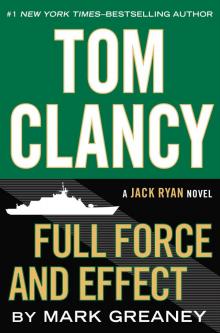 Full Force and Effect
Full Force and Effect The Archimedes Effect
The Archimedes Effect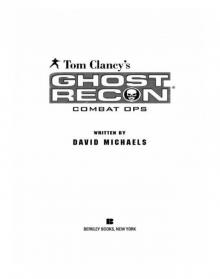 Combat Ops
Combat Ops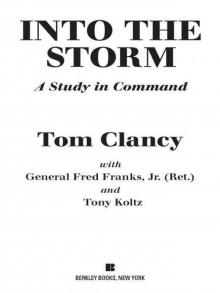 Into the Storm: On the Ground in Iraq
Into the Storm: On the Ground in Iraq Under Fire
Under Fire Point of Impact
Point of Impact Red Rabbit
Red Rabbit Rainbow Six
Rainbow Six The Hunt for Red October
The Hunt for Red October The Teeth of the Tiger
The Teeth of the Tiger Conviction (2009)
Conviction (2009) Battle Ready
Battle Ready Patriot Games
Patriot Games The Sum of All Fears
The Sum of All Fears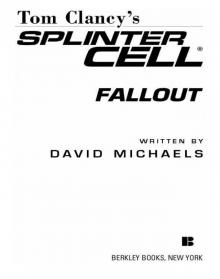 Fallout (2007)
Fallout (2007) Red Storm Rising
Red Storm Rising The Cardinal of the Kremlin
The Cardinal of the Kremlin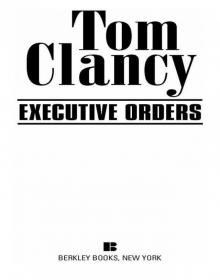 Executive Orders
Executive Orders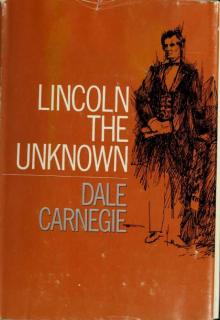 Lincoln, the unknown
Lincoln, the unknown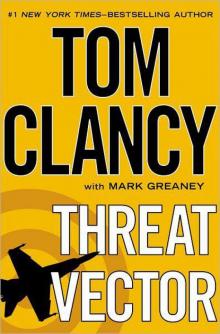 Threat Vector
Threat Vector The Hunted
The Hunted Shadow Warriors: Inside the Special Forces
Shadow Warriors: Inside the Special Forces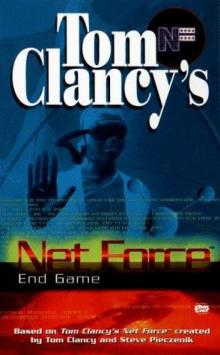 End Game
End Game Special Forces: A Guided Tour of U.S. Army Special Forces
Special Forces: A Guided Tour of U.S. Army Special Forces Locked On
Locked On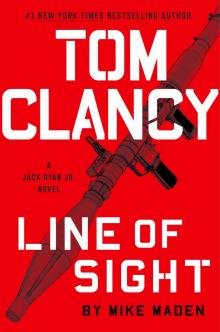 Line of Sight
Line of Sight Tom Clancy Enemy Contact - Mike Maden
Tom Clancy Enemy Contact - Mike Maden Fighter Wing: A Guided Tour of an Air Force Combat Wing
Fighter Wing: A Guided Tour of an Air Force Combat Wing Springboard
Springboard Line of Sight - Mike Maden
Line of Sight - Mike Maden EndWar
EndWar Dead or Alive
Dead or Alive Tom Clancy Support and Defend
Tom Clancy Support and Defend Checkmate
Checkmate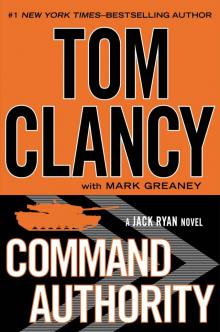 Command Authority
Command Authority Carrier: A Guided Tour of an Aircraft Carrier
Carrier: A Guided Tour of an Aircraft Carrier Blacklist Aftermath
Blacklist Aftermath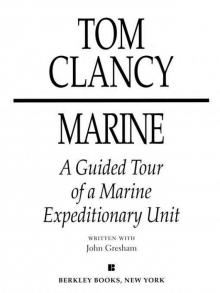 Marine: A Guided Tour of a Marine Expeditionary Unit
Marine: A Guided Tour of a Marine Expeditionary Unit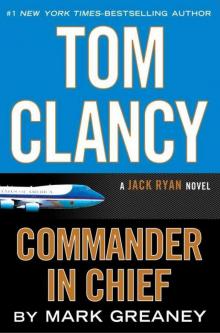 Commander-In-Chief
Commander-In-Chief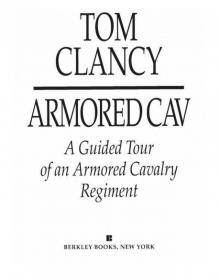 Armored Cav: A Guided Tour of an Armored Cavalry Regiment
Armored Cav: A Guided Tour of an Armored Cavalry Regiment Tom Clancy's Jack Ryan Books 1-6
Tom Clancy's Jack Ryan Books 1-6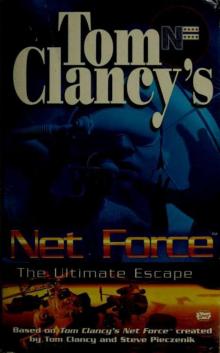 The Ultimate Escape
The Ultimate Escape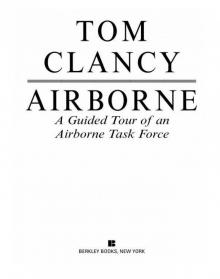 Airborne: A Guided Tour of an Airborne Task Force
Airborne: A Guided Tour of an Airborne Task Force Debt of Honor
Debt of Honor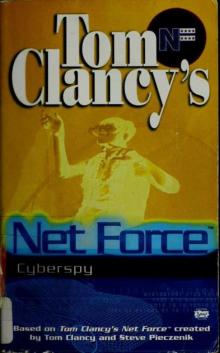 Cyberspy
Cyberspy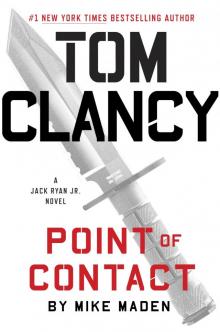 Point of Contact
Point of Contact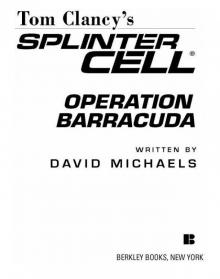 Operation Barracuda (2005)
Operation Barracuda (2005) Choke Point
Choke Point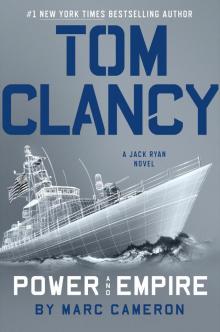 Power and Empire
Power and Empire Every Man a Tiger: The Gulf War Air Campaign
Every Man a Tiger: The Gulf War Air Campaign Endgame (1998)
Endgame (1998) EndWar: The Missing
EndWar: The Missing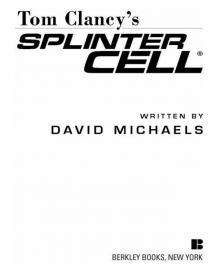 Splinter Cell (2004)
Splinter Cell (2004) The Great Race
The Great Race True Faith and Allegiance
True Faith and Allegiance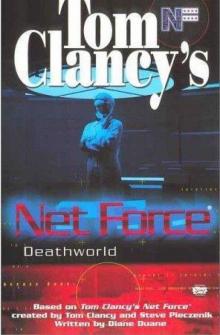 Deathworld
Deathworld Ghost Recon (2008)
Ghost Recon (2008)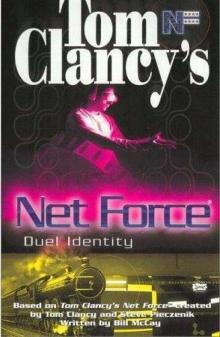 Duel Identity
Duel Identity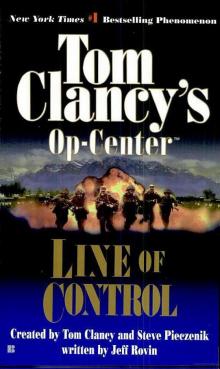 Line of Control o-8
Line of Control o-8 The Hunt for Red October jr-3
The Hunt for Red October jr-3 Hidden Agendas nf-2
Hidden Agendas nf-2 Acts of War oc-4
Acts of War oc-4 Ruthless.Com pp-2
Ruthless.Com pp-2 Night Moves
Night Moves The Hounds of Rome - Mystery of a Fugitive Priest
The Hounds of Rome - Mystery of a Fugitive Priest Into the Storm: On the Ground in Iraq sic-1
Into the Storm: On the Ground in Iraq sic-1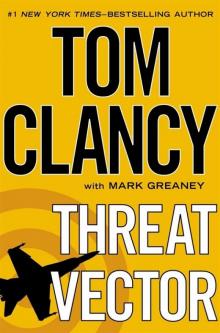 Threat Vector jrj-4
Threat Vector jrj-4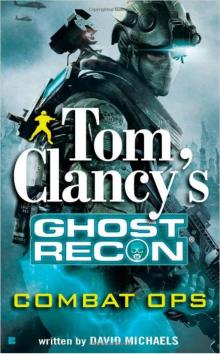 Combat Ops gr-2
Combat Ops gr-2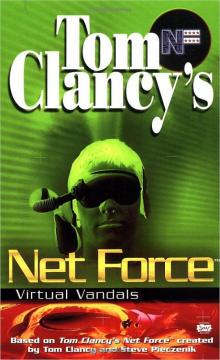 Virtual Vandals nfe-1
Virtual Vandals nfe-1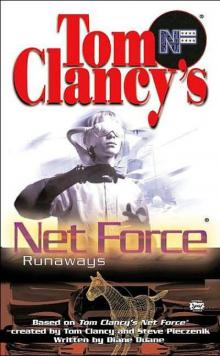 Runaways nfe-16
Runaways nfe-16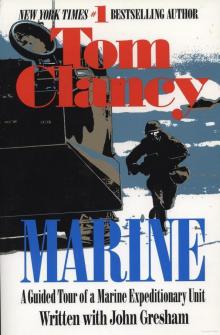 Marine: A Guided Tour of a Marine Expeditionary Unit tcml-4
Marine: A Guided Tour of a Marine Expeditionary Unit tcml-4 Shadow Warriors: Inside the Special Forces sic-3
Shadow Warriors: Inside the Special Forces sic-3 Jack Ryan Books 1-6
Jack Ryan Books 1-6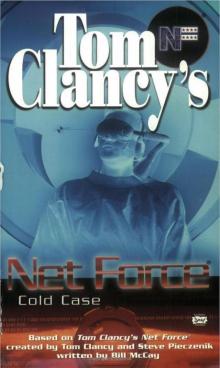 Cold Case nfe-15
Cold Case nfe-15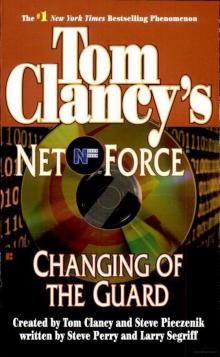 Changing of the Guard nf-8
Changing of the Guard nf-8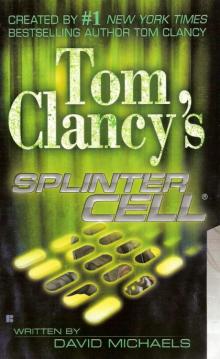 Splinter Cell sc-1
Splinter Cell sc-1 Battle Ready sic-4
Battle Ready sic-4 The Bear and the Dragon jrao-11
The Bear and the Dragon jrao-11 Fighter Wing: A Guided Tour of an Air Force Combat Wing tcml-3
Fighter Wing: A Guided Tour of an Air Force Combat Wing tcml-3 Patriot Games jr-1
Patriot Games jr-1 Jack Ryan Books 7-12
Jack Ryan Books 7-12 Mission of Honor o-9
Mission of Honor o-9 Private Lives nfe-9
Private Lives nfe-9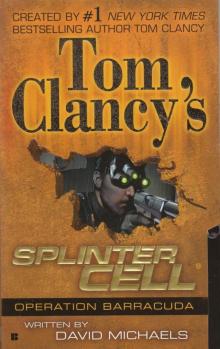 Operation Barracuda sc-2
Operation Barracuda sc-2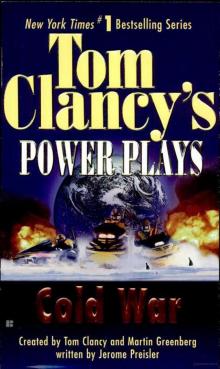 Cold War pp-5
Cold War pp-5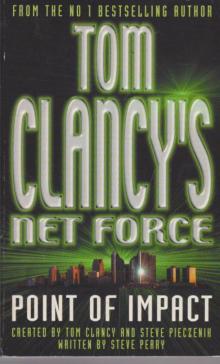 Point of Impact nf-5
Point of Impact nf-5 Red Rabbit jr-9
Red Rabbit jr-9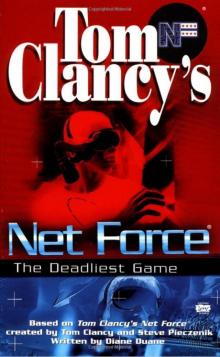 The Deadliest Game nfe-2
The Deadliest Game nfe-2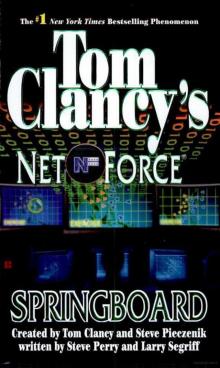 Springboard nf-9
Springboard nf-9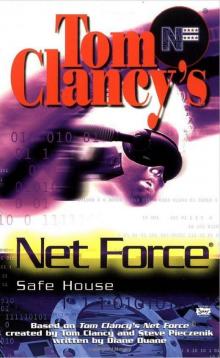 Safe House nfe-10
Safe House nfe-10 EndWar e-1
EndWar e-1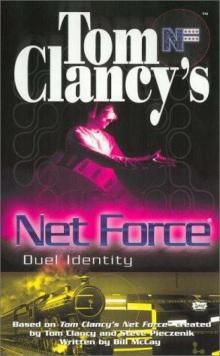 Duel Identity nfe-12
Duel Identity nfe-12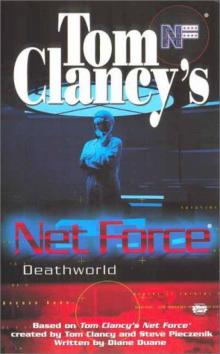 Deathworld nfe-13
Deathworld nfe-13 Politika pp-1
Politika pp-1 Rainbow Six jr-9
Rainbow Six jr-9 Tom Clancy's Power Plays 1 - 4
Tom Clancy's Power Plays 1 - 4 Endgame sc-6
Endgame sc-6 Executive Orders jr-7
Executive Orders jr-7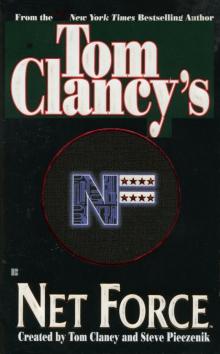 Net Force nf-1
Net Force nf-1 Call to Treason o-11
Call to Treason o-11 Locked On jrj-3
Locked On jrj-3 Against All Enemies
Against All Enemies The Sum of All Fears jr-7
The Sum of All Fears jr-7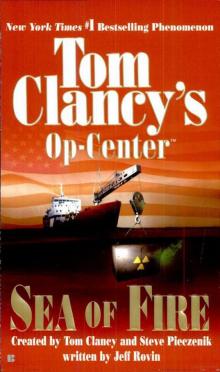 Sea of Fire o-10
Sea of Fire o-10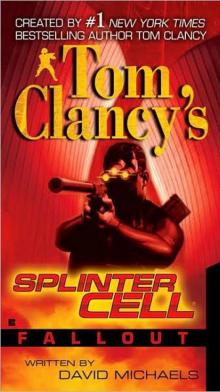 Fallout sc-4
Fallout sc-4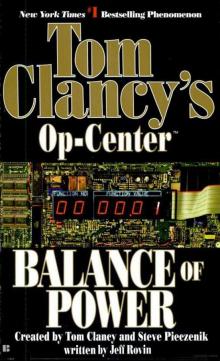 Balance of Power o-5
Balance of Power o-5 Shadow Watch pp-3
Shadow Watch pp-3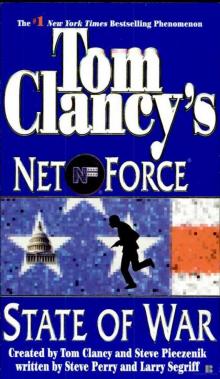 State of War nf-7
State of War nf-7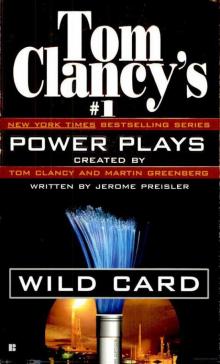 Wild Card pp-8
Wild Card pp-8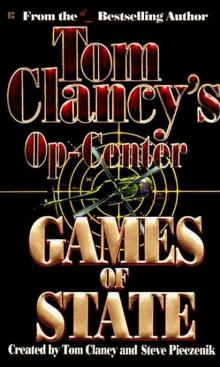 Games of State o-3
Games of State o-3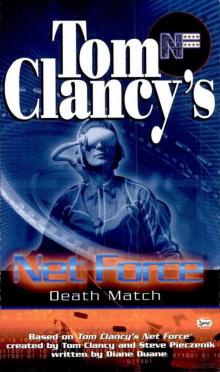 Death Match nfe-18
Death Match nfe-18 Against All Enemies mm-1
Against All Enemies mm-1 Every Man a Tiger: The Gulf War Air Campaign sic-2
Every Man a Tiger: The Gulf War Air Campaign sic-2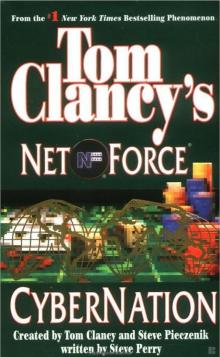 Cybernation nf-6
Cybernation nf-6 Support and Defend
Support and Defend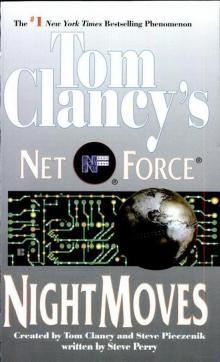 Night Moves nf-3
Night Moves nf-3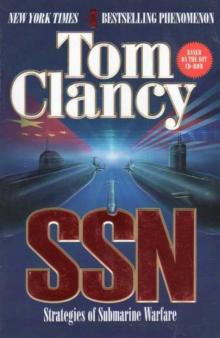 SSN
SSN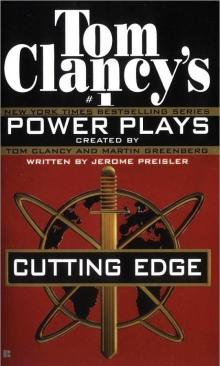 Cutting Edge pp-6
Cutting Edge pp-6 The Cardinal of the Kremlin jrao-5
The Cardinal of the Kremlin jrao-5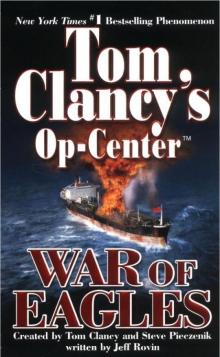 War of Eagles o-12
War of Eagles o-12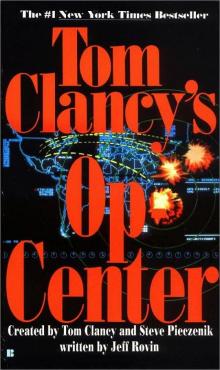 Op-Center o-1
Op-Center o-1 Mirror Image o-2
Mirror Image o-2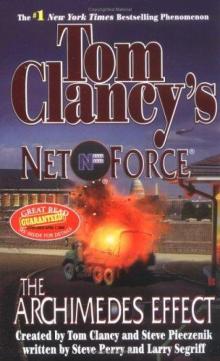 The Archimedes Effect nf-10
The Archimedes Effect nf-10 Teeth of the Tiger jrj-1
Teeth of the Tiger jrj-1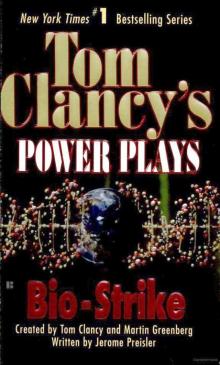 Bio-Strike pp-4
Bio-Strike pp-4 State of Siege o-6
State of Siege o-6 Debt of Honor jr-6
Debt of Honor jr-6 Zero Hour pp-7
Zero Hour pp-7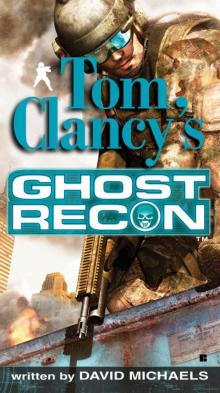 Ghost Recon gr-1
Ghost Recon gr-1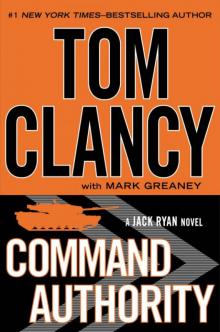 Command Authority jr-10
Command Authority jr-10 Tom Clancy's Power Plays 5 - 8
Tom Clancy's Power Plays 5 - 8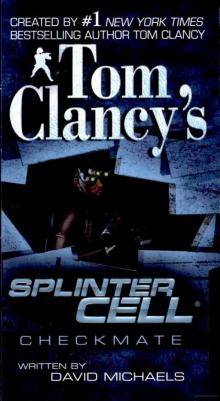 Checkmate sc-3
Checkmate sc-3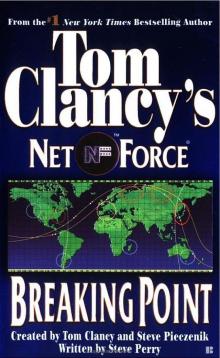 Breaking Point nf-4
Breaking Point nf-4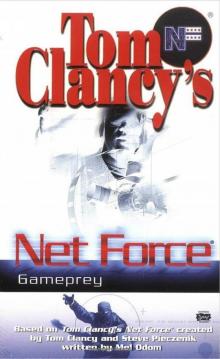 Gameprey nfe-11
Gameprey nfe-11 The Hunted e-2
The Hunted e-2 Hidden Agendas
Hidden Agendas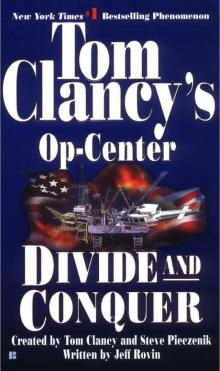 Divide and Conquer o-7
Divide and Conquer o-7